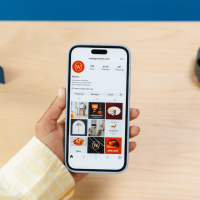Selling directly to customers through DTC fulfillment gives brands more control over pricing, customer experience, and product presentation. By managing the entire process from order to delivery, brands can compete with large online marketplaces through faster service, unique packaging, and direct customer relationships. This approach removes middlemen, which often leads to better margins and more consistent brand messaging.
Marketplaces may offer reach, but they also limit control over how products are displayed, priced, and delivered. DTC fulfillment allows brands to respond quickly to customer feedback, adjust inventory strategies, and create personalized experiences that marketplaces cannot match. As a result, brands can build loyalty and stand out in a crowded online space.
The shift toward DTC is not just about selling products online—it is about owning the customer journey from start to finish. This article explores how DTC fulfillment levels the playing field, the strategies that make it effective, and the innovations that help brands compete head-to-head with marketplace giants.

How DTC Fulfillment Empowers Brands Against Online Marketplaces
Selling directly to customers allows brands to control pricing, presentation, and service without depending on third-party platforms. It also gives them better access to customer data, which can be used to improve products, marketing, and delivery speed.
Control Over Customer Experience and Brand Loyalty
Online marketplaces control much of the buying experience, from checkout to delivery. This can make it difficult for a brand to stand out.
With DTC fulfillment, brands decide how orders are packed, shipped, and presented. They can include custom packaging, thank-you notes, or product samples to create a more personal connection.
A direct to consumer fulfillment center can help maintain this consistency by handling storage, packing, and shipping according to the brand’s exact standards. This control often leads to stronger loyalty, as customers remember the experience as much as the product itself.
Direct-to-Consumer Model vs. Online Marketplaces
In a direct-to-consumer model, brands sell through their own website, social media, or physical store. This removes the need for intermediaries like online marketplaces.
Marketplaces often set rules for pricing, product listings, and promotions. They also take a percentage of each sale, which can reduce profit margins.
By contrast, DTC fulfillment allows brands to keep that margin and set their own sales strategies. They can also decide how to present products, from descriptions to photography, without marketplace restrictions.
This independence can make it easier to build a unique brand identity and maintain consistent communication with customers.
Leveraging Customer Data for Personalization and Engagement
Marketplaces often limit the data they share with sellers. Brands may only see basic sales reports, without details on who their customers are or what they prefer.
In a DTC model, brands collect customer information directly through their own platforms. This can include purchase history, browsing behavior, and feedback.
They can use this data to create targeted offers, recommend products, or send follow-up messages after a purchase. This level of personalization can increase repeat sales and help shape future product development.
Cost Efficiency and Supply Chain Optimization
Selling through a marketplace can add extra costs, such as listing fees, commissions, and fulfillment charges. These expenses can reduce the profitability of each order.
DTC fulfillment can lower costs by removing marketplace fees and streamlining the supply chain. Brands can ship directly from their own warehouse or through a dedicated fulfillment partner.
This approach allows more control over inventory levels, shipping methods, and delivery times. It can also make it easier to adapt to seasonal demand or launch new products without depending on a third-party platform’s systems.
Key Components and Innovations in DTC Fulfillment
Direct-to-consumer fulfillment depends on accurate order processing, efficient storage systems, and fast delivery methods. Brands use technology and service improvements to reduce costs, maintain product quality, and improve the customer experience from purchase to delivery.
Order Placement and Real-Time Inventory Management
The process starts when a customer places an order through the brand’s online store. The system must process the order instantly to keep delivery times short. Real-time inventory tracking helps prevent overselling and allows customers to see accurate stock levels before checkout.
Brands often connect their e-commerce platform to their inventory management software. This integration updates stock counts as soon as an order is confirmed. It also alerts staff when stock reaches a set threshold, which helps avoid delays caused by out-of-stock items.
Accurate data supports better forecasting. For example, a beauty product brand can prepare for seasonal demand by reviewing past sales trends. This level of control over stock and order placement helps maintain customer trust and reduces costly returns.
Warehousing, Automation, and Scalability
Warehousing in DTC fulfillment often combines storage, picking, and packing in one facility. Some brands handle this in-house, while others use third-party logistics providers. The choice depends on order volume, product type, and growth plans.
Automation plays a key role in speeding up the order fulfillment process. Conveyor systems, barcode scanners, and automated sorting stations reduce manual errors and help staff process more orders per hour.
Scalability matters for brands expecting rapid growth. A flexible warehouse setup allows a company to add more storage space or processing stations during peak seasons. This prevents backlogs and maintains delivery promises without needing a complete facility overhaul.
Shipping, Custom Packaging, and Sustainability
Shipping speed and cost influence whether a customer completes a purchase. DTC brands often negotiate rates with carriers to keep shipping costs competitive. Real-time tracking gives customers visibility from dispatch to delivery, which reduces support requests.
Custom packaging helps brands stand out. It can include branded boxes, inserts, or protective materials that match the product type. This adds to the unboxing experience without delaying shipment.
Sustainability has become a priority in packaging and shipping. Many brands now use recyclable materials, minimize excess packaging, and choose carriers with lower carbon emissions. These steps reduce environmental impact while appealing to customers who value eco-friendly practices.
Subscription Services and Customer Satisfaction
Subscription services create predictable revenue and steady demand. Customers receive products on a set schedule, such as monthly refills for personal care items. This model simplifies inventory planning and reduces marketing costs for repeat purchases.
Customer satisfaction depends on consistent delivery, product quality, and responsive service. Brands that manage subscriptions well often see higher retention rates. They can adjust shipment frequency, pause orders, or offer product swaps to meet customer needs.
Direct communication channels, such as email or SMS updates, keep customers informed about their orders. This level of service strengthens the relationship and encourages long-term loyalty.
Conclusion
DTC fulfillment gives brands more control over pricing, product presentation, and customer service. This direct approach helps them create a consistent experience that matches their own standards rather than those of a marketplace.
By managing orders, packaging, and delivery themselves or through a partner, brands can respond faster to customer needs. This flexibility allows them to adapt to trends and feedback without delays caused by third-party intermediaries.
In addition, direct access to customer data supports better product planning and targeted marketing. As a result, brands can compete on more than just price, offering value through service, speed, and a closer connection with their audience.










